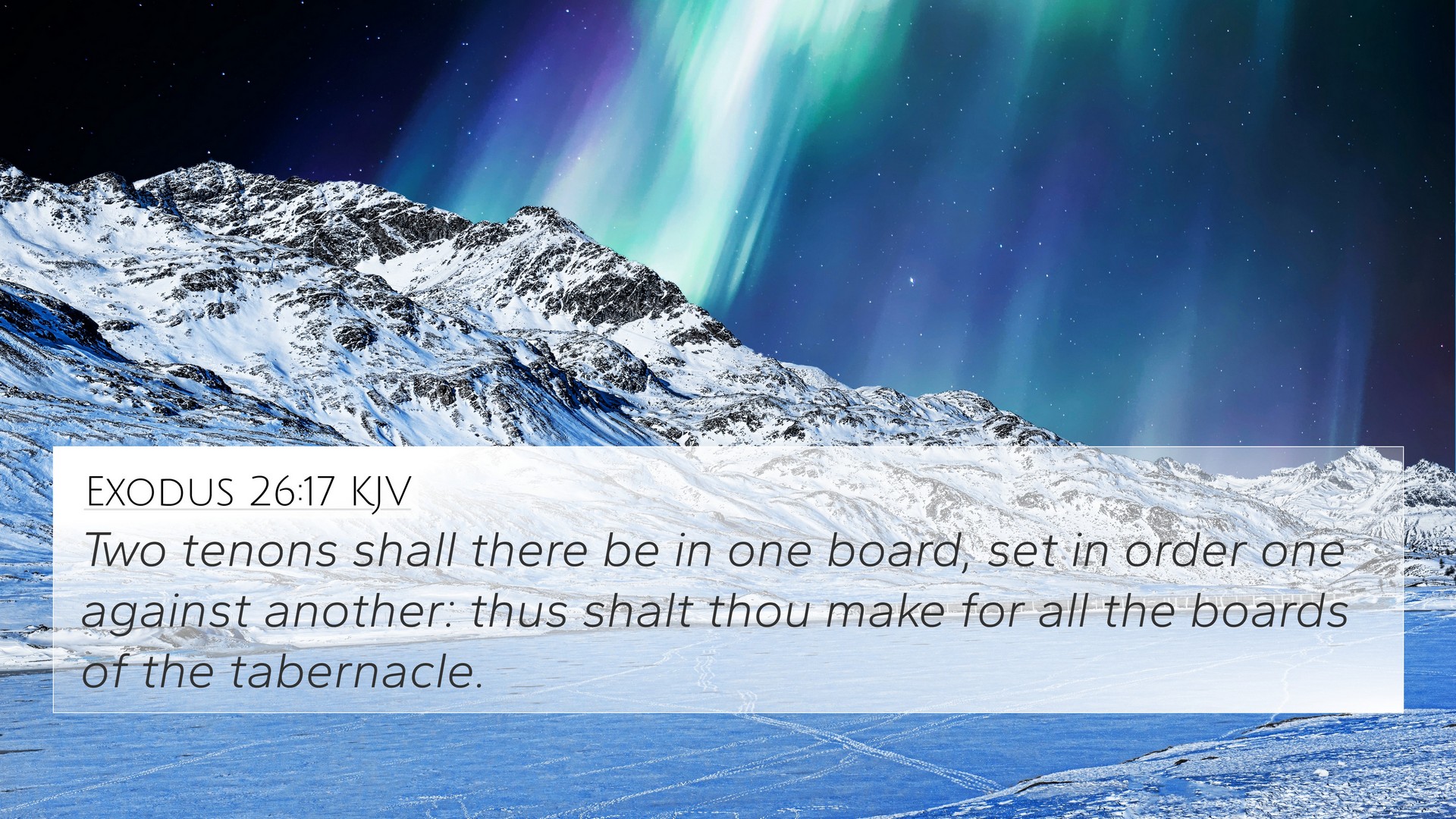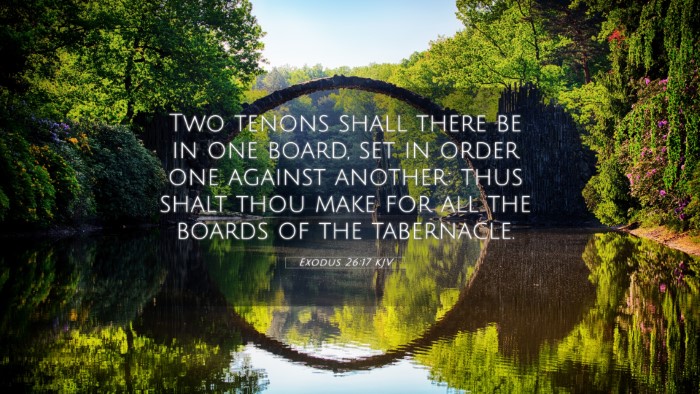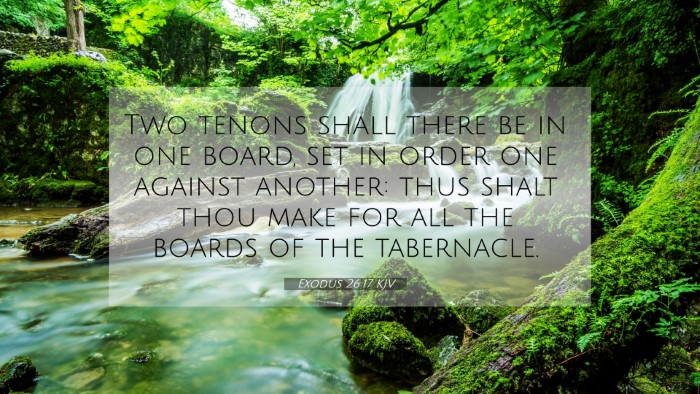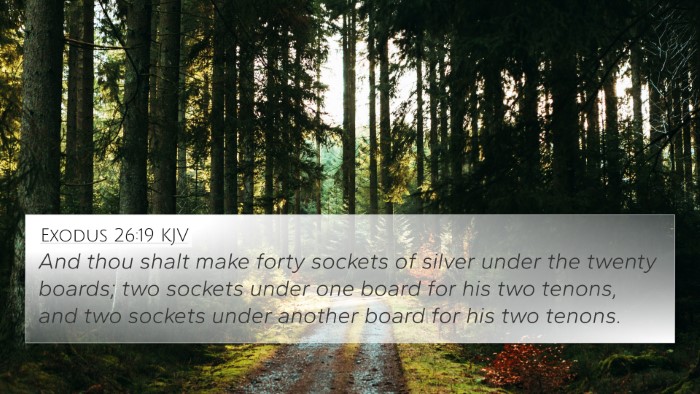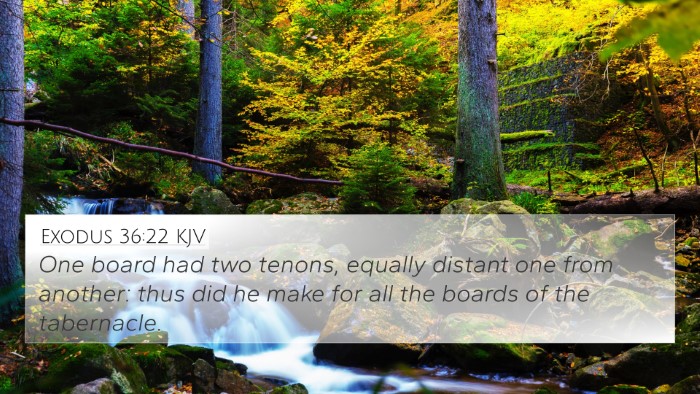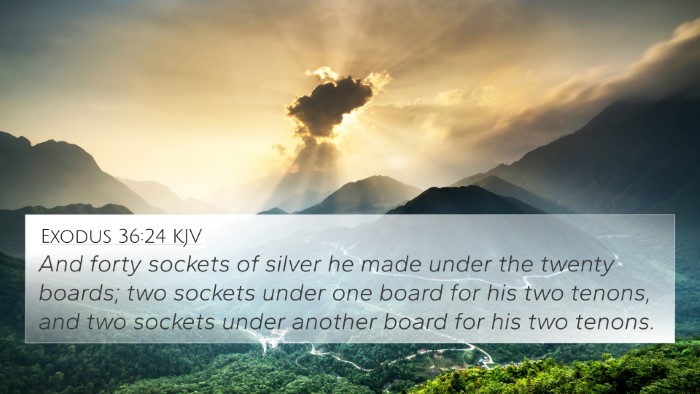Understanding Exodus 26:17
Exodus 26:17 states, "Two boards shall be in a corner for one tabernacle." This verse is part of a larger passage detailing the construction of the Tabernacle, an important structure in ancient Israelite worship. By examining this verse through the lens of various public domain commentaries, we can derive deeper meaning and insights.
Contextual Analysis
According to Matthew Henry's Commentary, this verse underscores the meticulous and divinely ordained nature of the Tabernacle's construction. Each element, including the boards, symbolizes God's presence among His people. The use of "two boards" highlights unity and strength, illustrating the idea that God desires a sturdy foundation for His dwelling.
Albert Barnes further elaborates that the boards represent the stability and permanence of God’s sanctuary. The "two boards" signify the corners of the Tabernacle, emphasizing its secure structure and the faithfulness of God’s covenant with Israel.
Adam Clarke remarks that the specifications for these boards serve as both a literal command and a spiritual metaphor. They depict the necessity of a firm foundation in faith and the importance of adhering to God’s instructions for worship.
Thematic Bible Verse Connections
- Numbers 3:36-37: Further descriptions of the Levite duties and their relation to the Tabernacle.
- 1 Chronicles 28:11-12: A reference to the plans given to David for the temple, recalling the importance of divine specifications.
- Hebrews 9:2: New Testament acknowledgment of the Tabernacle's significance in the worship system.
- 2 Samuel 7:6-7: God's emphasis on having no established dwelling emphasizes the Tabernacle's role.
- Exodus 25:8: A directive to build a sanctuary for God, connecting to the understanding of His dwelling.
- Matthew 5:14: The concept of being a city on a hill relates symbolically to the integrity and purpose of the Tabernacle.
- John 1:14: The Word becoming flesh and dwelling among us parallels the desire for God to dwell among His people.
Cross-Referencing Biblical Texts
Utilizing cross-references provides an enriched understanding of this verse. Through these connections, we can explore the relationships between different scriptures, noting how they inform one another. For example, Hebrews 8:5 discusses how the earthly sanctuary is a pattern of the heavenly reality, tying back to the design of the Tabernacle outlined in Exodus.
In-Depth Comparative Analysis
The detailed construction of the Tabernacle, as seen in Exodus chapters 25-27, serves as a template. The adherence to divine instructions is crucial, resonating with the theme of how God's guidelines lead to a proper relationship with Him. This idea is mirrored in the New Testament where Jesus emphasizes obedience to God’s Word.
Tools for Bible Cross-Referencing
For those studying the Bible more deeply, understanding how to effectively use bible concordances and bible cross-reference guides can unlock layers of meaning within the text. By identifying connections between Old and New Testament scriptures, one can engage in a more thorough cross-reference Bible study.
Conclusion
In summary, Exodus 26:17 offers insight into God’s intricate plan for worship and His desire to dwell among His people. By employing cross-referencing methods and examining biblical themes and connections, readers can deepen their understanding of scripture. This examination reveals the cohesive nature of God’s Word and encourages further exploration of the rich tapestry of biblical texts.
